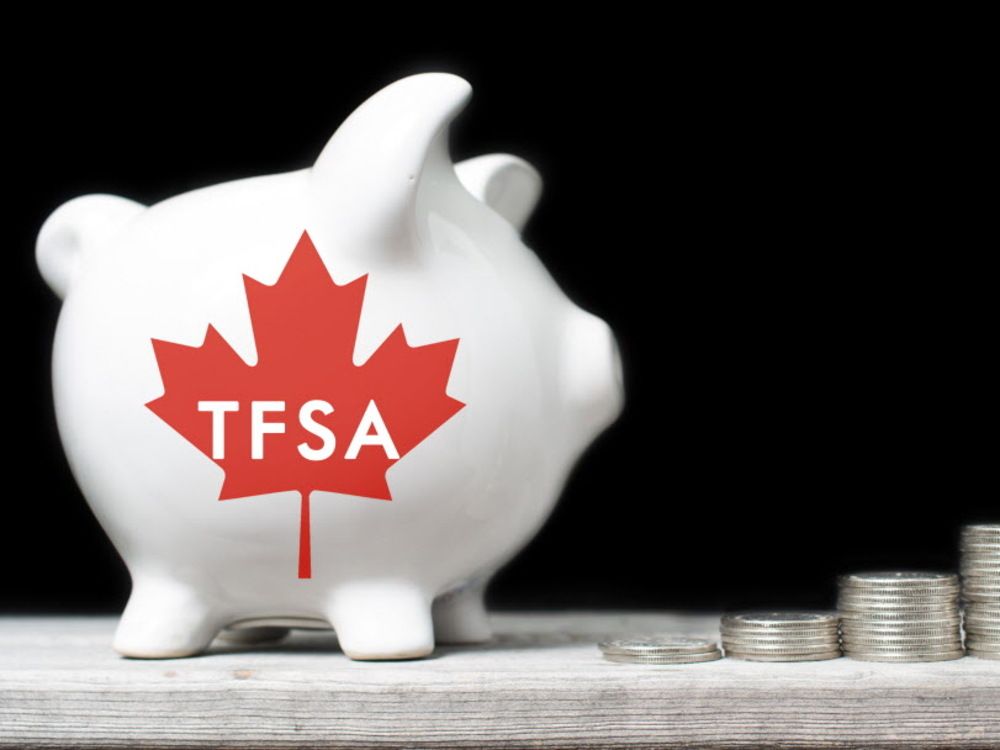Last time we talked about the intricacies of international trade and tariff policy. We discussed a tale of two cities: the imaginary economies of Budgetistan and Bakersville, and their two currencies, the Bakersville Sprinkle, and the Budgetistani Bill.
Today we’ll sail closer to our own reality, to talk about the current controversy of the Trump Administration’s proposed trade war, and how it is likely to impact each of us in the near future. What, if anything, does Trump get right about trade and tariffs, and what does he get wrong? More importantly: what will it mean practically for each of us?
The Iffy Goals of Recent Tariffs

Back in our reality, the Trump administration claims its tariffs aim to achieve several goals: reducing trade deficits, protecting domestic industries, and generating revenue to pay off national debt. While tariffs can theoretically achieve any one of these objectives, they cannot accomplish all of them simultaneously. These goals are mutually exclusive. This inherent contradiction is the first major issue with the administration’s announced plan—it claims to do all three at once.
Good to Know:
Hank Green of Vlogbrothers published a highly informative breakdown of many strange claims made by Trump Adminstration officials in recent weeks, mostly having to do with tariffs. Most importantly, he points out that the stated goals of tariffs cannot logically happen at the same time. It’s definitely worth a watch.
Reducing Trade Deficits
The administration argues that tariffs will reduce the U.S. trade deficit, particularly with China, by discouraging imports and encouraging domestic production. However, trade deficits are influenced by broader economic factors, such as savings and investment rates, rather than tariffs alone. Additionally, tariffs often provoke retaliatory measures from trading partners, which can reduce U.S. exports and potentially widen the trade deficit.
Rather than making the U.S. more competitive, tariffs may have the opposite effect. Without ready access to essential trade goods—such as steel, rubber, and plastic—the U.S. cannot rebuild its industrial base as envisioned. Every car produced domestically must be made from materials sourced either abroad or domestically, and retaliatory tariffs can erase any potential benefits of domestic production.
While tariffs might create better-paying jobs, the costs of goods—from food to clothing—would likely rise faster than wages, leaving consumers worse off. The interplay between higher production costs and retaliatory tariffs makes it difficult for the U.S. to achieve competitiveness in global markets.
And this is not even considering the potential loss of investor confidence that would leave American businesses worse off than ever. If capital leaves the US financial system because of increasing tariffs, that loss can be far more important than any long term gains from increased domestic industry. Growing an industry takes capital, and if a country is causing capital to leave its banking system while it wants to rebuild its economy, then there will be no capital to expend on that process.
Protecting Domestic Industries
Tariffs are also presented as a way to shield U.S. industries from foreign competition, preserving jobs. The idea here would theoretically be that making it more expensive to buy imported goods, such as cars from Japan or clothing from Bangladesh, would discourage US retailers from carrying these products. With fewer imported products for sale, retailers and buyers would fall back on domestically made products, which would increase sales from US manufacturers.
While this might benefit certain sectors in the short term, it can harm others. And anyway, it’s never a simple question of eliminating an import and replacing it with a domestic product. For one thing, even domestic manufacturers rely on foreign made parts, which often come from the same countries that make the same kinds of products US manufacturers make. So while a Japanese car might suddenly be too expensive to bother importing, this does not mean that an American made car would not also become more expensive. Steel, petroleum, parts, electronics, and other goods are necessary to produce cars, and with broad based tariffs aimed at reducing imports, those items only become more expensive.
There is also the fact that domestic manufacturers would like to sell their products overseas, just as foreign manufacturers want to sell their products in the US. Industries reliant on imported materials will face higher costs, reducing their global competitiveness. A tariff on car imports may help the local car industry, but a retaliatory tariff on microchips or steel would make those cars more expensive, hurting both the car industry and consumers, and wiping out any potential gains. With higher retaliatory tariffs on American cars themselves, exports from America would be reduced, wiping out any benefit those manufacturers gained from an increase in domestic sales.
There are pretty good reasons why tariffs have gotten lower and lower over the past century: it’s because for the most part, tariffs simply become an arms race that hurts everyone. Tariffs that provide short-term advantages tend to be copied by competing countries, seeking to wipe out that advantage and damage the prospects of the other side of a trade war. The result is that ultimately trade is simply more difficult, and most products end up costing everyone more.
Generating Revenue to Pay Off Debt
The administration claims that tariffs will generate significant revenue to address the national debt. However, this belief is overly simplistic and has been rejected by mainstream economists for generations.
While tariffs do produce revenue, they also disrupt other sources of income. For every dollar generated by tariffs, U.S. businesses bear the cost. These businesses may pay less corporate income tax, cut jobs, or reduce investments, further impacting future tax revenue. A dollar earned through tariffs could cost the government three dollars in lost revenue elsewhere.
Moreover, the economic disruptions caused by tariffs—such as higher consumer prices and reduced business investment—can offset any revenue gains. If inflation continues to rise as prices jump, this reduces the ability of businesses to expand their operations, as salaries would also have to go up, and raw materials would cost more. At the same time, consumption would dry up, with households choosing to put off many purchases, or to simply consume less in an effort to save money. Stagnating sales growth combined with inflation was termed “stagflation” when it occurred in the 1970s, caused by sudden increases in energy prices that caused industrial economies to stall as prices were rising everywhere.
Many argue that the long-term consequences could be even worse, potentially leading to an economic depression as a result of a trade war.
For that matter, the idea of a “trade war” is in itself problematic. A war is typically fought between two countries over their conflicting interests. In the case of a trade war, the war itself destroys the economic value of a trade relationship, and as a result, both countries will tend to lose in the process. It’s less a war, and more a series of self-imposed penalties. As the costs mount, the desire to recoup those costs only increases, but the ability of either side to do so is sharply curtailed. As trade volume drops, revenue from tariffs drops also, as does tax revenue from other sources. In an effort to keep revenues up, tariffs can be increased in a vicious cycle. In the end, no-one really wins.
Why These Claims Are Self-Contradictory
The contradictions arise from the interplay of these goals:
Higher Prices vs. Consumer Behavior: Tariffs increase the cost of imports, which is supposed to encourage consumers to buy domestic goods. However, the administration also claims tariffs won’t significantly raise prices, undermining the incentive for consumers to switch to domestic products. If prices don’t go up, or if they go down, then the tariffs will probably not pay for themselves in increased revenue. If prices go up, then consumption will have to go down, or people will simply have to spend more and have less to show for it.
In order for a tariff to “work” in the way the Trump administration claims they will, prices would have to go down on domestic goods at the same time that demand for them is increasing. That is unlikely due to the nature of supply and demand. It may be possible that eventually, domestic production of certain goods will increase to the point where their costs will begin to drop, but that is something that might take years or even decades to occur. In the mean time, American consumers will have less choice, lower quality goods, or less ability to buy what goods there are.
Revenue vs. Trade Deficits: Another claim from Trump officials is that the tariffs will increase government revenue, allowing the US to pay off its national debt. At the same time, tariffs are hoped to decrease trade deficits. But if tariffs successfully reduce imports (and thus trade deficits), the revenue generated from tariffs would decrease, contradicting the goal of using tariffs to pay off debt.
Furthermore, a strange and poorly understood aspect of the national debt is: where does that money go? National debt, particularly in the case of the United States, is not only money being sent to banks in foreign countries. Instead, much of the US national debt is owed to its own citizens, by way of entitlements such as the Social Security Administration. The majority of the US national debt is owned, in this way, by Americans. Despite the common belief that the national debt is owed to foreign countries, particularly China, the truth is that China owns just 7 percent of the US sovereign debt, and all other countries own only about 25% of the rest.
75% of the US national debt is owed to Americans, either through social programs, bonds, treasury bills, or other debt instruments. When US citizens pay into Social Security, Medicare, and other programs, this money is exchange for United States treasury bonds, and the money is then used by the government to fund government services. Over time, the government then pays back these bonds, returning the money to the Social Security and Medicare administrations as the bonds come due. This system provides two benefits: first, it gives the massive flows of money into these programs a place to go, and a stable and dependable, inflation proof way of gaining interest over many years, and it also allows the government to borrow money cheaply and long term, in order to pay for expensive long-term investments like infrastructure. Cities and states have similar systems, and much of that debt is also owed to Americans via state and city level retirement schemes.
In essence, the national debt is a retirement account for American citizens. If the national debt is “paid down,” typically by repaying bonds that are held in the names of US citizens in the form of Social Security, then those bonds will not pay a future income, and the ability of the Social Security Administration to pay future entitlements will be reduced. In effect: paying down the national debt reduces the ability of the US government to pay for its own future expenses.
As it turns out, the reason that the national debt is owed to US citizens is a good one: citizens make more money during their working careers than they do during their retirement. By taking money for social programs when people make more money, and paying that money out decades later, the US economy benefits from a more stable and broad based consumer economy. Poverty and depression are bad for business, and the stability and prosperity of Americans, included retired Americans, has been built on the back of the Social Security system.
Furthermore, even the portion of the national debt that is nominally owed to foreign nations is also very commonly held in, and reinvested in, the United States. That money often sits in US banks, and goes toward financing US businesses. As the center of global banking and trade, the US is in a unique position. The more money that is owed to foreign countries and US citizens, the more money US banks typically have available to lend out. By engaging in a trade war, the US will actually weaken its own ability to borrow from this pool of money, and hurt prices of domestic assets that foreign investors typically invest in.
Protecting Industries vs. Global Supply Chains: Finally, many U.S. industries depend on global supply chains for essential components, such as microprocessors and rare earth minerals. Tariffs on imported components increase production costs, making it harder for industries to compete domestically and internationally.
Retaliatory tariffs further harm U.S. industries by reducing demand for American-made goods abroad. In industries such as semiconductors and other high cost components, the development cycles and the base of educated and skilled workers necessary to compete with world leading industries such as those in Taiwan or China, will take trillions of dollars of investment, and potentially decades to bear fruit. Meanwhile, a trade war will be weakening the ability of the US to compete with those industries, and giving other countries a huge windfall by increasing the availability of low cost goods from those countries. If the US economy is contracting, as it already has begun to do, there will be less money available to fund the multiple trillions of dollars that would be necessary to develop these high tech industries over the next 30 years.
There is no scenario in which American business could lay its hands on enough money to finance that kind of re-industrialization without government help. The high-tech economies of China, Japan, and Taiwan are all built on rivers of public money that has been invested for decades in making those industries flourish. A similar commitment would be incredibly expensive, and the money would need to come from somewhere.
it’s also unlikely that tariffs will really help American manufacturers compete internationally. It should be obvious that if the US slaps large tariffs on these sorts of goods, foreign producers will not simply cease making them. Instead, they will be seeking markets for those goods among the other trading partners that the US is seeking to court. If Taiwanese microchips are suddenly cheaper and more available in Canada, then Canadian businesses have no incentive to buy those microchips from the United States. Instead, this better and cheaper supply of Taiwanese microchips will be encouraging yet further investment in Canada, at a time when the US is an unattractive place to lend money.
Until the US has a world-competitive microchip industry, which would be decades in the making, its trade competitors will have many years and the funding necessary to continue to beat them to the punch. By the time US chip makers were competitive with China, Japan, and Taiwan, those countries will also have had decades to improve their own production methods and products, and unlike the US, they will have had the benefit of years of income from their already successful industry.
The Hard Truth About Trade
There are a great many inequities and injustices in the world today. Globalization has created many problems, from increased global greenhouse emissions, to unemployment, to a worldwide system of trade that is shockingly vulnerable to disruptions like Covid-19, or the rapid climate change that the world is now experiencing.
Those inequities and instabilities have caused anger, alienation, confusion, and pain for workers and consumers in many places, including in America. It should not be surprising, in a way, that the US now turns to an isolationist ideology that was last prevalent during the Great Depression of the 1930s. Following massive systemic shocks, people turn to radical and extreme solutions. They turn to leaders who say what they want to hear, and they yearn for stability, fairness, and relief. These are natural and in their way normal and expected phenomena.
However, tariffs and trade barriers were largely abandoned, and were not treated as serious tools of global reform for nearly a century, because they simply do not work. Nowhere, possibly, is it more true than in the United States, for the many reasons this post has illustrated, that tariffs and trade wars will not work to solve the inequities of globalization. The United States has been at the center of a globalizing economy for nearly a century. Since even before the end of World War 2, the United States has been the shepherd of a global system of supply chains and trade that has opened access to markets across the world, and ensured trade barriers fell away, and more regions than ever gained access to the global marketplace. The United States benefited from this position in many ways, seen and unseen. But more than almost any other country, it molded itself into a platform for global trade.
To turn away now from its role as a global hub for trade and finance, and to erect barriers and reduce integration with other economies, is to turn away from what has become the heart of the American system itself. And it will not work. It will not work because whether the United States wishes to maintain its own role at the center of global trade and trade security, the rest of the world will go on globalizing without it. Globalism and free trade won’t just stop. It will go on without the US in its lead role. This won’t ultimately be good for anyone. The cost of replacing the United States in this role will be severe, and it will be felt everywhere. No one will win in a trade war. Instead, Americans and others will be poorer, have less opportunity, and enjoy slower economic growth as a result.
Already, Trump administration officials have begun to packpedal on many of the sweeping tariffs that were recently announced. We should expect that many of the trade barriers proposed will never come to be enacted. However, even this episode has already weakened the US’s ability to play its traditional role as a center of global trade and finance. Already, this episode has changed the nature of US trade relationships, and shocked global confidence in a system of trade it has enjoyed since World War 2.
Knowledge is power. Understanding how and why tariffs can or cannot do what politicians promise is a key starting point for choosing how to react to the developing situation.










